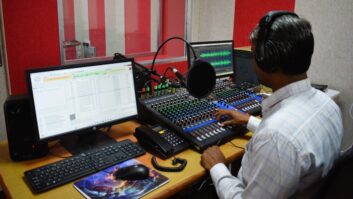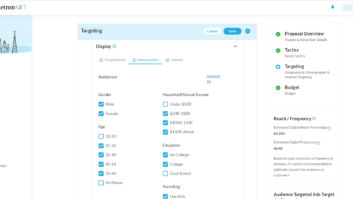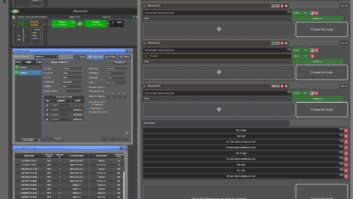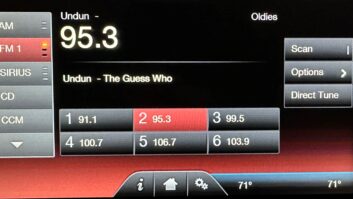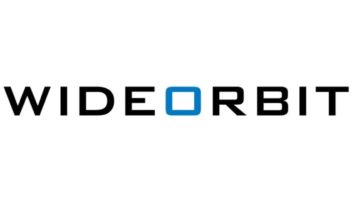
This image shows TPEG information of a large metropolitan area (Seoul, Korea). Credit: BMW Group BRUSSELS — At almost every conference about radio’s future, one can find a speaker or two saying that traffic information is one of the reasons why consumers should opt for digital radio in their cars.
Transport Protocol Experts Group (TPEG), a set of standards for the delivery of traffic and traveler information, promises to go beyond nearly all of the downsides found in the widely used Traffic Message Channel (TMC) standard, which was designed when everything was still analog.
In 1998 the European Broadcasting Union commissioned a group, called B/TPEG, to undertake the open development of this technology. In 2007, the Traveller Information Services Association was founded, inheriting the work previously maintained by the EBU. Wisely, TPEG is more than just a standard — from the very beginning, one of its main goals was to design TPEG as a future-proof protocol. The technology thus features enough flexibility to fit forthcoming challenges, as well as to correct most drawbacks relative to the RDS-TMC system, including low bitrate, the need for a location database in client devices and not being truly language independent).
Quality, content
Basically, TPEG is a multimodal Traffic and Travel Information data protocol for delivering content to the end user. TPEG permits the development of new application protocols and the integration of additional types of information, thanks to its extensible protocol design. The adoption of a standardized protocol changes the focus among service providers — now they can compete on quality and content, instead of capturing customers with proprietary solutions.
Moving to the digital domain increases service data rates. While a typical TMC round-robin cycle may require from three to five minutes, the complete cycle of the TPEG carousel usually requires less than a minute. If poor reception prevents the receiver from obtaining specific information, the time necessary to get the same information is still less than two minutes.

TPEG allows the delivery of detailed information even at street level. Credit: BMW Group With TMC it may be up to 10 minutes. While driving at 100 kilometers per hour, this means learning about a gridlock 13 kilometers in advance (distance traveled in the resulting eight minutes time — 1.67 kilometers per minute), and possibly being able to avoid it.
Every TMC decoder terminal must have a location database to interpret any message received. TMC messages cannot deliver latitude-longitude data, pointing instead to significant road and highway junctions.
For example: if a crash takes place between Exit 3 and Exit 4, northbound, on the M5 motorway, traffic events will then be superimposed onto maps by matching the information included in the message with the location table. Thus, any event appears as related to an entire section of the main road between two junctions instead of at its exact location. This means there is a significant difference as to how navigation devices interpret an accident, and can lead to drivers making the wrong choice as regards their itinerary.
Furthermore, an opening of new junction or any subsequent revision of road database information potentially creates a complex situation for all end users, introducing the need for continuous updates of the location database in any device.
Language independency
TPEG, on the contrary, does not require a location database in client devices and can deliver very rich location information, on the fly, with every message. The technology can also deliver messages in densely populated urban areas, while navigation systems can “pinpoint” each event directly on the display.

Worldwide TPEG Adoption Source: TISA In addition, end users are able to filter messages based on various criteria, such as event type, location, transportation mode and direction of travel. The system is also capable of performing properly out-of-the-box, with no prior set-up required when first accessing a service.
TMC relies on predetermined phrases (translated and factory-stored into any device) to display information in the end user’s language of choice. TPEG improves this concept by “decomposing” any information into essentially codes for short “phrases,” separately describing for example, the cause and the effect of a traffic incident. In general, these codes can be better translated and rendered into any possible language of choice.
To maximize bandwidth efficiency, prior to being aired, the various “words” are “mapped” with reference to a set of tables, designed to cover all possible scenarios that may require description. The system thus uses a “code” value to deliver a “richer word” to a client device, which turns the message into displayable information in the language of choice.
Through the use of a “code” instead of a “richer word” it is possible to deliver phrases such as a “large truck with trailer overturned on right lane” or “free-flowing traffic” using few code values. The tables are extensible and upgradable, with backward compatibility.
The TPEG message-construction concept allows the system to assemble available information about an event and turn it into effective, precise, detailed messages. Each service provider has greater freedom to describe an event and enrich the content: The appropriate software does the phrase building on the fly, generating the TPEG content to be aired.
TPEG Messages have the same overall structure: Message Management Container (MMC) refers to “when,” Application Container (APP) to “what” and Location Reference Container (LRC) to “where.” It is possible to send TPEG information via DAB (TPEG Transport Frames) in Transparent Data Channel, and a similar adaptation specification exists for HD Radio.
The digital radio broadcasting of TPEG information allows users to operate a single broadcasting system for “radio” content and TTI, fast update (refresh) of messages, fixed cost for service provider, a cost-free data transfer (no data carrier fees to pay).

On the other hand, DAB-TPEG requires receivers that can handle large information dataset, and its availability (as well as its market penetration) depends on DAB implementation in the various countries.
At present, the United Kingdom has deployed the DAB-TPEG service, and Germany is likely to accelerate DAB-TPEG with public service offerings. TPEG-capable receivers are already available on the market, both aftermarket Personal Navigation Devices and line-fit navigation systems of several car manufacturers.
Davide Moro reports on the industry for Radio World from Bergamo, Italy.





